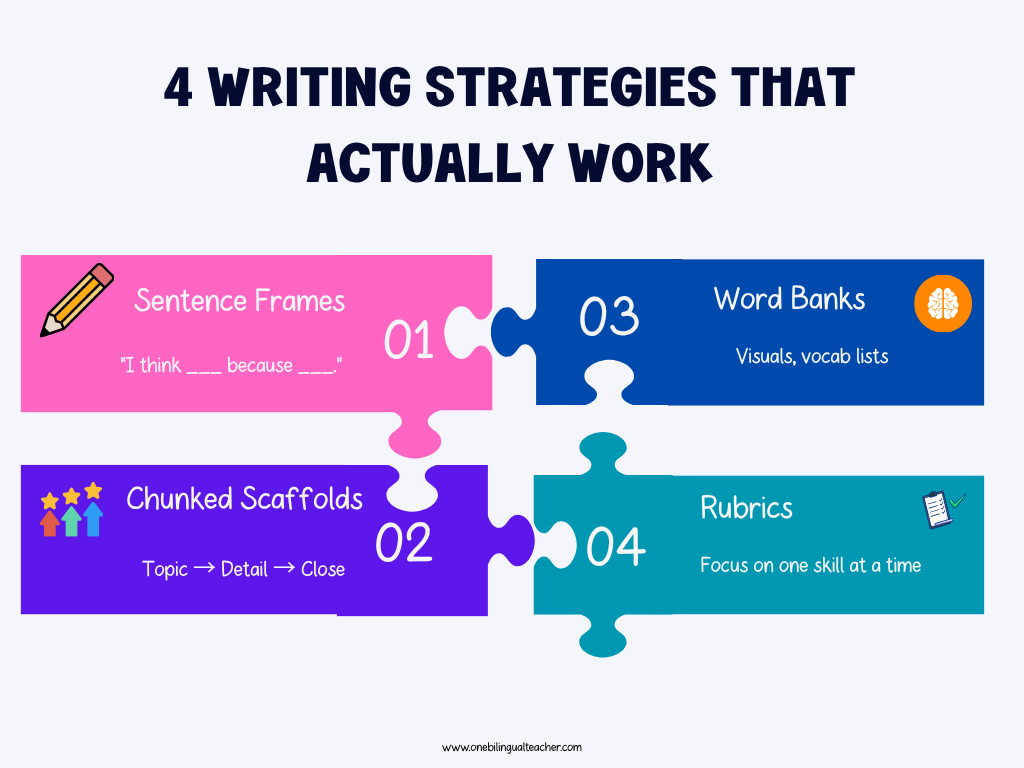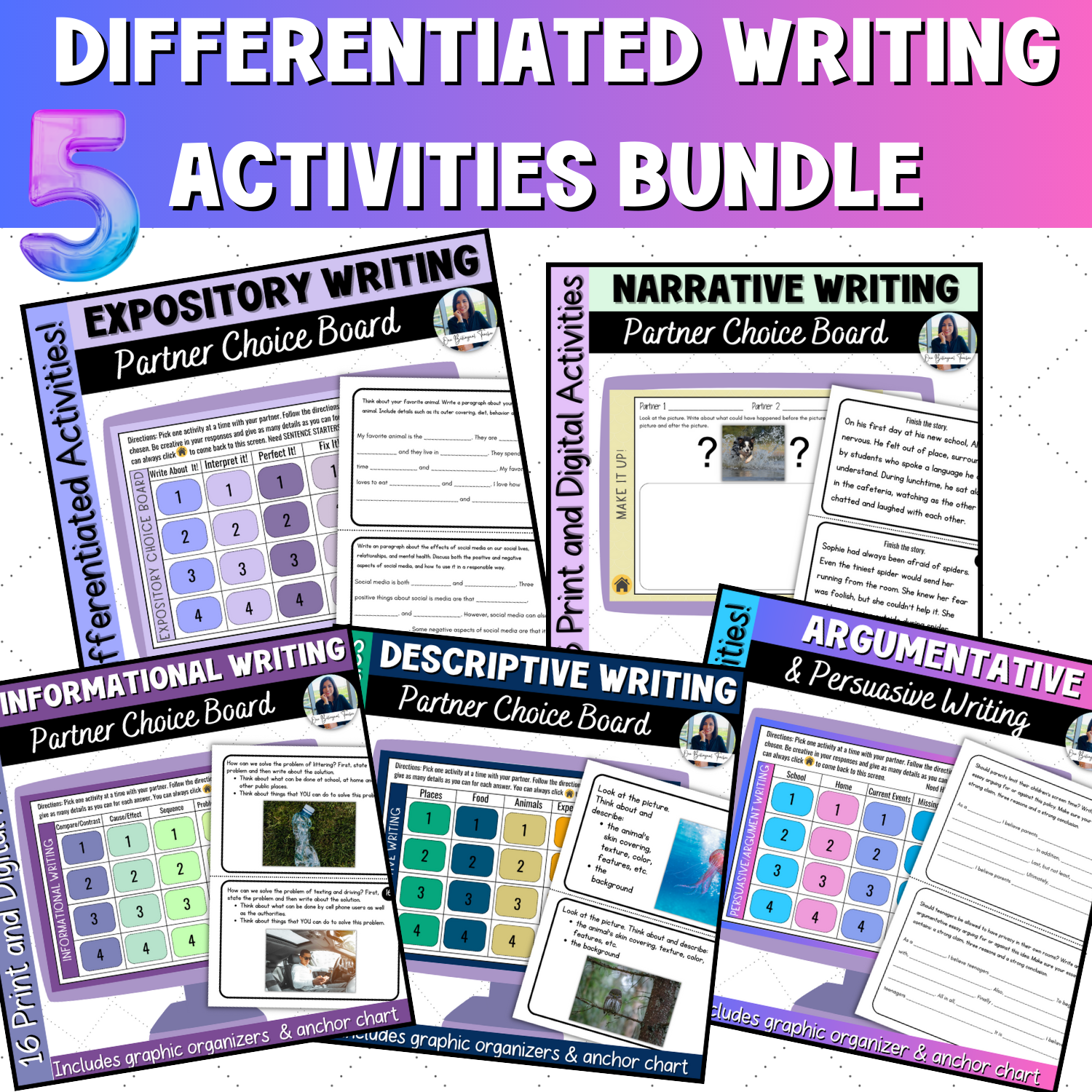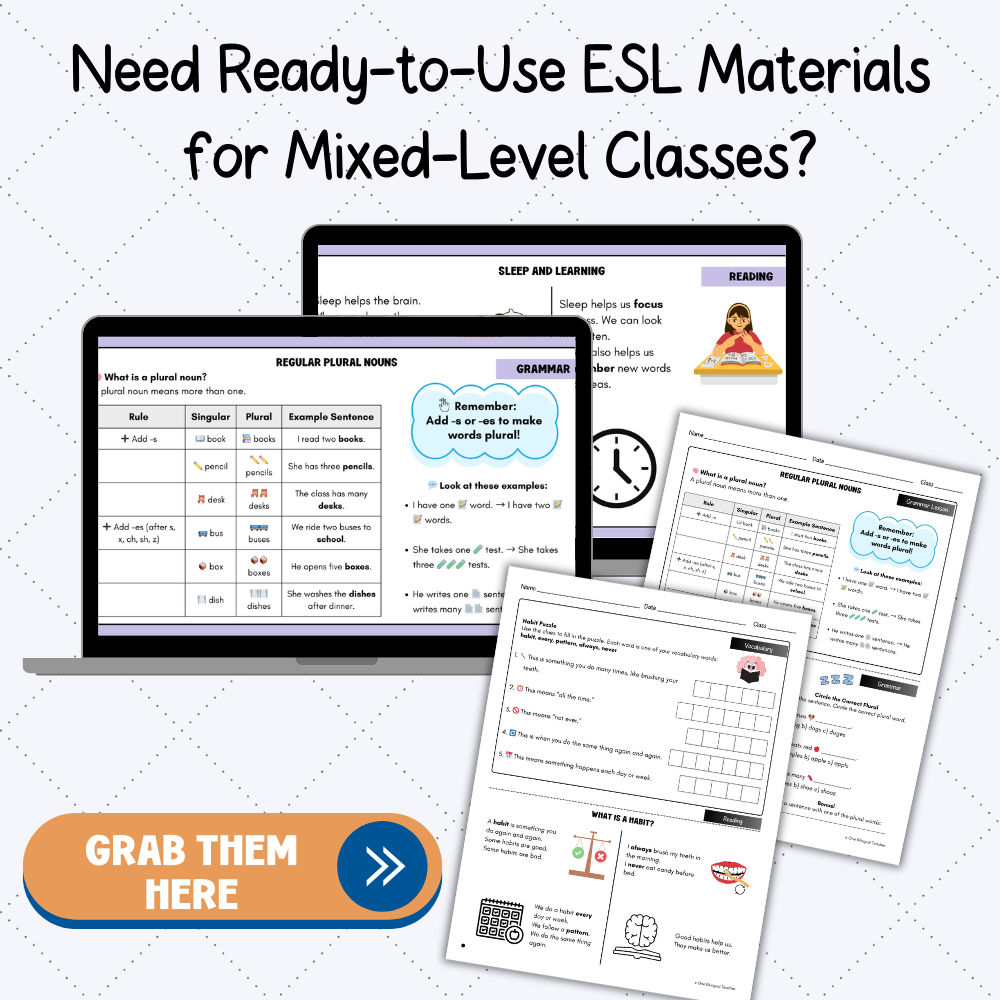The ESL Writing Problem: Why It’s So Hard and What Actually Helps
You assign a simple writing prompt. One student stares at the paper. Another writes three words. A third turns in a full page—copied straight from Google Translate.
If you’ve ever felt completely stuck teaching writing to English learners, you’re not alone.
Writing is often the hardest skill to teach in an ESL classroom—and the one that takes the longest to show results. It requires grammar, vocabulary, organization, clarity, and confidence—all at once. And when your students are at different levels of English, it can feel impossible to know where to start.
In this post, I’ll break down why writing is so hard for ELLs and what actually helps, including practical writing strategies, sentence frames, and scaffolds you can use tomorrow.
Why Writing Feels So Hard (for Them and for You)
Writing is the most demanding form of language output. It’s not just about spelling or grammar—it’s about turning ideas into clear sentences with structure and flow. For English learners, that means juggling:
Unfamiliar vocabulary
New grammar rules
Sentence structure differences
Limited writing experience—even in their first language
Fear of being wrong, judged, or misunderstood
As teachers, we feel this too. The silence after a writing prompt. The one-sentence answers. The paragraphs full of errors you don’t know how to grade fairly. It’s frustrating, and it’s easy to feel like you’re failing.
But you’re not. Writing just requires a different approach—and the right supports.
What Doesn’t Work (And Why)
Before we talk about what does work, let’s name a few things that usually don’t:
❌ Giving open-ended writing prompts with no support
❌ Expecting full paragraphs from students who can barely form a sentence
❌ Correcting every single error with a red pen
❌ Skipping pre-writing and jumping into drafting
If your students shut down during writing, it’s not because they’re lazy—it’s because they don’t know how to do what you’re asking. That’s not a behavior problem. That’s a scaffolding problem.
What Actually Helps: Writing Strategies That Work for ESL
Here are four writing strategies for ESL students that truly make a difference—especially for beginners and intermediate learners.
1. Sentence Frames & Starters
These give students a sentence structure to plug into so they can focus on the idea, not the grammar.
Examples:
“I agree with ___ because ___.”
“First, ___ happened. Then, ___.”
“In my opinion, ___.”
✅ Start with full frames, then gradually reduce support
✅ Use color coding to highlight grammar or sentence parts
✅ Offer 2–3 sentence options so students can choose what fits
2. Chunked Writing Scaffolds
Instead of assigning a full paragraph, break it into small, manageable chunks:
Topic sentence
One supporting detail
A transition phrase
Closing sentence
Use simple graphic organizers to guide them through the steps. Model what each part should look like. Let students build up to a full response.
3. Visual Word Banks and Anchor Charts
A lack of vocabulary stops writing before it even starts. Help your students by:
Providing content-based word banks
Creating anchor charts for transition words, opinion phrases, or description starters
Using interactive notebooks or writing folders they can reference daily
4. Simplified Writing Rubrics
Rubrics shouldn’t overwhelm students—they should guide them. Try:
Rubrics with visuals or icons
Focusing on just one skill per assignment (e.g., complete sentences, opinion clarity)
Giving feedback in color: green = great, yellow = needs work, red = revisit
This builds confidence and allows for targeted growth instead of overwhelm.
Tools That Make Writing Easier for Everyone
You don’t need to create your own writing frames or rubrics from scratch.
The most helpful resources for ESL writing include:
Scaffolded writing prompts
Tiered sentence frames
Opinion + narrative paragraph builders
Visual rubrics and checklists
Editable graphic organizers
If you're looking for materials that walk your students through the writing process step by step—without you having to prep it all yourself—you’ll love what’s inside my ESL Writing Bundle or my membership for busy ESL teachers.
Progress is Slow—But It’s Real
Your students may not write a perfect paragraph today. That’s okay.
Writing is a slow-growing skill, but every sentence matters. Every frame used. Every attempt at organizing a thought. Every time they write a little more than last time.
Celebrate the wins, no matter how small.
Because your students are writing. They’re trying. They’re growing.
And that’s the real goal.
Want Writing to Feel Easier?
Ready to take the stress out of teaching writing to ELLs?
My scaffolded writing resources are designed specifically for ESL students at different proficiency levels—with sentence frames, chunked organizers, and visual rubrics that make writing less scary for them (and for you).




